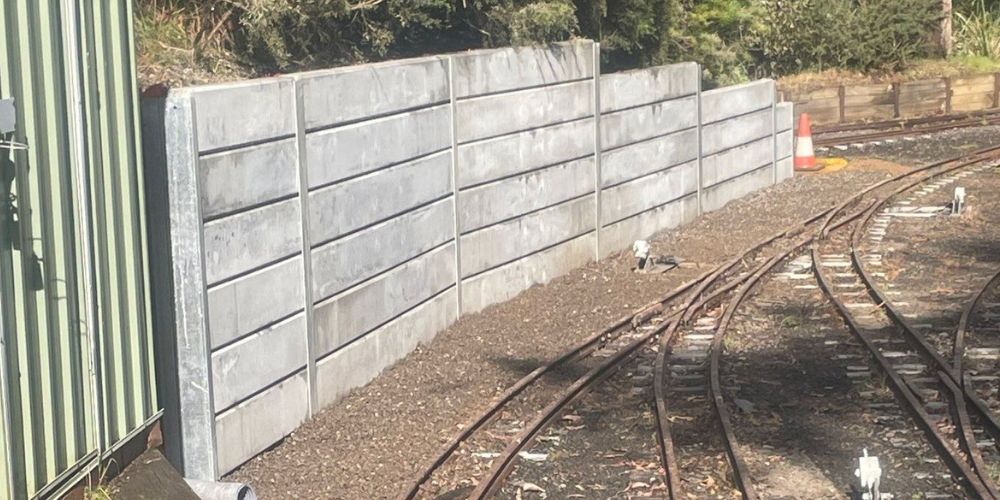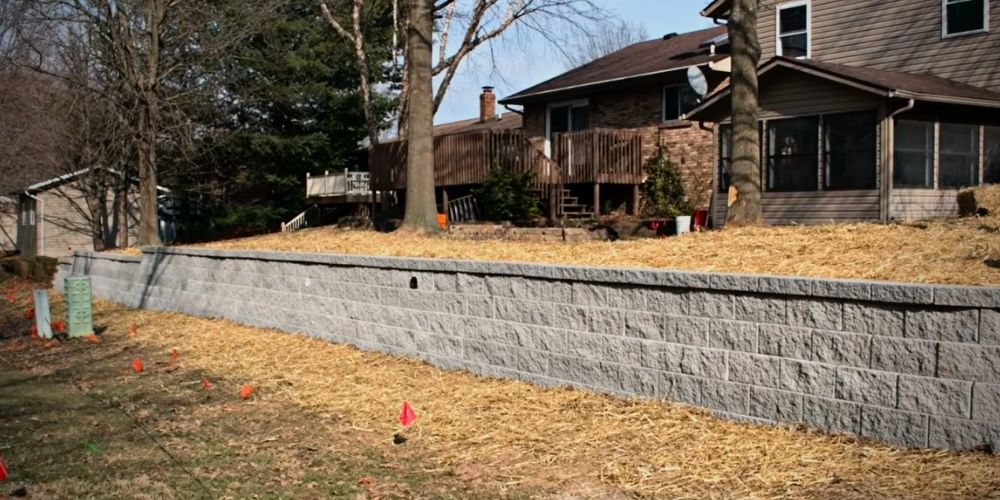How Thick Should a Retaining Wall Need To Be?
Considering the thickness of your retaining wall plays a big factor in increasing its lifespan. If you’re reading this, chances are you’ve got your hands in the world of retaining walls, just like I do here in Melbourne. As a retaining wall builder, I know how crucial it is to get the basics right, and one of the key elements is figuring out just how thick your retaining wall needs to be.
I get it – the thickness of your retaining wall might not be the first thing that comes to mind when envisioning your dream outdoor space. But trust me, understanding this aspect can make a world of difference in the long run.
Considering the thickness of your retaining wall plays a big factor in increasing its lifespan.
In this blog, we’re diving deep into the nitty-gritty details of retaining wall thickness. I want to share some insights and tips I’ve gathered from years of hands-on experience, not just as a builder but as someone passionate about creating durable, aesthetically pleasing structures.

Why Is Retaining Wall Thickness Important?
To guarantee the durability and efficacy of the building, retaining wall thickness is crucial. Typically, retaining walls are intended to keep soil and other materials in place so they don’t slide or erode. The wall’s capacity to sustain structural integrity and withstand external forces largely depends on its thickness.
Here are some reasons why retaining wall thickness is important:
Load-Bearing Capacity
A retaining wall’s ability to support weight directly correlates with its thickness. Generally, a bigger wall can withstand larger loads and stronger lateral pressures from the retained dirt.
Stability
The pressure from the retained material and the effects of outside elements like water buildup are two forces that retaining walls must withstand. Thicker walls provide greater stability and a lower chance of failure or collapse.
Prevention of Bulging or Tilting
Insufficient thickness might cause the retaining wall to bulge or tilt when exposed to significant lateral pressure from the held material. A thicker wall can withstand these pressures and keep its vertical alignment better.
Durability
In general, thicker walls are stronger and last longer. They are more resilient to the impacts of weathering, erosion, and other environmental elements that may eventually compromise the wall’s structural integrity.
Design Considerations
The required thickness will depend on the particular design requirements of a retaining wall, which include the wall’s height, the kind of soil it is holding back, and the slope of the land. Following appropriate design rules and standards is essential to guaranteeing the retaining wall’s efficacy.
Safety
A sufficiently thick retaining wall is necessary for nearby people and property safety. A wall that has been built shoddily or with poor design may collapse and cause harm to people or property.
Compliance with Regulations
Minimum thickness standards for retaining walls are frequently specified by building rules and regulations, considering variables including height, soil type, and location. Respecting these rules is necessary to guarantee the structure’s safety and legal compliance.

How To Calculate The Thickness of the Retaining Wall
As a Melbourne retaining wall builder, I know how crucial it is to have a well-thought-out and well-built retaining wall to guarantee the stability and longevity of your property.
While seeking the advice of a qualified engineer is essential for precise computations, you can use these guidelines when determining the thickness of a retaining wall:
Determine the Height of the Retaining Wall (H):
Calculate the vertical distance between the soil retention point at the top of the wall and its base. This height plays a crucial role in figuring out the wall’s thickness.
Consider the Slope of the Terrain
Analyse the land’s slope behind the wall. Steeper slopes may impact the stability of the retaining wall because of the increased lateral pressure on it. The slope angle is a feature that engineers consider in their designs.
Check Local Regulations and Guidelines
Building laws and regulations regulate construction projects in Melbourne, just like they do in any other region. To ensure these criteria are followed, check with the local government or seek advice from an expert.
Use a Rule of Thumb for Residential Applications
Some builders uses a thumb rule stating that the retaining wall’s thickness should be at least one-tenth of the wall’s height as a quick reference for residential applications. For instance, 0.4 feet (4.8 inches) of thickness might be the beginning point if the wall is 4 feet high.
Consider Drainage Needs
An effective drainage system is essential to a retaining wall’s stability. Because too much water might raise soil pressure, consider the drainage situation on your land. Sufficient drainage arrangements can affect the wall’s thickness and design.
Consult with a Professional Engineer
Speaking with a skilled engineer is imperative for a site-specific study, even though these guidelines offer a fundamental understanding. Engineers consider additional aspects such as safety factors, surcharge loads, and soil-bearing capability to offer an accurate thickness assessment.
Retaining Wall Thickness Calculator
We formulated here a retaining wall thickness calculator which you can use to have an idea. It’s a simple way to gauge the thickness you might need for your retaining wall project.
But remember, this is not a substitute for a professional engineering analysis or retaining wall builder consultation. It’s still best to talk to the expert personally to better understand what you need and avoid bigger problems in the future.
So, feel free to use the calculator as a starting point, but when it comes to ensuring the stability and effectiveness of your retaining wall, expert advice is key.
Retaining Wall Thickness Calculator
Standard Size of a Retaining Wall
The ideal thickness for retaining walls varies depending on the site-specific features and design specifications. Hence, there needs to be a universally applicable standard thickness. Engineering calculations are used to calculate the thickness of retaining walls, considering several aspects such as the wall’s height, soil composition, terrain slope, and local building codes.
Nonetheless, as a general rule of thumb for residential applications:
Short Walls (up to 4 feet):
Typically, thickness begins around 8 to 12 inches.
Medium Walls (4 to 10 feet):
The thickness can vary between 12 and 18 inches, contingent upon slope and soil characteristics.
Taller Walls (10 feet and above):
Thickness increases significantly and may require engineering expertise. Walls of this height often require special design considerations and reinforcements and may need to comply with specific local regulations.
Frequently Asked Questions
Indeed, levelling down steep ground for parking lots or roadways can be accomplished with retaining walls. Proper design and construction are crucial to guarantee stability and durability under the increased load.
Although retaining walls can be constructed on various soil types, the soil’s cohesion, drainage, and compaction greatly influence the design. Certain types of soil could need further attention.
To improve aesthetics or accommodate topographical changes, retaining walls can be constructed with curves or stairs. Stepped and curved walls could call for extra materials and architectural concerns.
Retaining wall selection is influenced by soil type, height, budget, and aesthetic choices. Speak with an expert to evaluate your requirements and choose the best action.
Conclusion
Understanding how thick your retaining wall should be is key for a strong and lasting structure. Consider the height, the soil, and local rules. Now that you know the basics, check your own space. But remember, consulting a pro is smart for precise advice. Talk to your trusted retaining wall builders to make the right choices for a robust structure.
